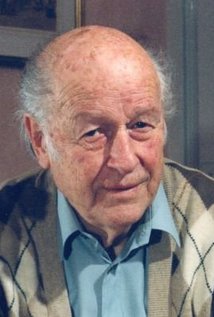
Ray Harryhausen
Birthday:
29 June 1920, Los Angeles, California, USA
Birth Name:
Raymond Frederick Harryhausen
Height:
185 cm
When it comes to motion picture special effects, there is only one name that personifies movie magic - Ray Harryhausen. From his debut films with George Pal to his final film, Harryhausen imbued magic and visual strength to motion picture special effects as no other technician has, before or since.Born in Los Angeles, the signature event in Harryha...
Show more »
When it comes to motion picture special effects, there is only one name that personifies movie magic - Ray Harryhausen. From his debut films with George Pal to his final film, Harryhausen imbued magic and visual strength to motion picture special effects as no other technician has, before or since.Born in Los Angeles, the signature event in Harryhausen's life was when he saw King Kong (1933). So awed was the 13-year-old Harryhausen that he began researching the film's effects work, ultimately learning all he could about Willis H. O'Brien and stop-motion photography - he even contacted O'Brien and showed an allosaur short he made, which caused O'Brien to quip to his wife, "You realize you're encouraging my competition, don't you?" Harryhausen tried to make a stop-motion epic, titled "Evolution", but the time required to make it resulted in it being cut short. The footage he completed - of a lumbering apatosaurus attacked by a belligerent allosaurus - made excellent use as a demo reel, and as a result Harryhausen's first film job came with George Pal, working on Pal's Puppetoon shorts for Paramount. A stint in the army utilized Harryhausen's animation skills for training films.After the World War II, Harryhausen acquired over 1000 feet of unused military film and made a series of Puppetoon-flavored fairy tale shorts, which helped him land a job with Willis H. O'Brien and Marcel Delgado on Mighty Joe Young (1949). Although O'Brien received credit for it, 85% of the actual animation was done by Harryhausen. Harryhausen's real breakthrough, however, came when he was hired by Warner Brothers to do the special effects for The Beast from 20,000 Fathoms (1953). The film's $200,000 budget meant that Harryhausen would be forced to improvise to get the kinds of quality effects he wanted, and to that end he learned a technique called "split-screen" (rear projection on overlapping miniature screens) to insert dinosaurs and other fantastic beasts into real-world backgrounds. The result was one of the most influential sci-fi films of the 1950s.From there Harryhausen went over to Columbia and teamed with producer Charles H. Schneer, the teaming becoming synonymous among sci-fi and fantasy film aficionados with top-notch special effects work the remainder of their respective careers. After three sci-fi monster films and work with Willis O'Brien on an Irwin Allen documentary, Harryhausen did the effects work for The 7th Voyage of Sinbad (1958), his first split-screen film shot entirely in color, which was highlighted by Harryhausen's mythological monsters interacting with Kathryn Grant, Torin Thatcher's flavorful performance as the villain and the rousing score of Bernard Herrmann.Because Harryhausen worked alone on his stop-motion animation sequences, the filming of these could often take as long as two years, the most famous example of the kind of patience required being the exciting skeleton sword fight sequence in Jason and the Argonauts (1963) (his most popular film) in which Harryhausen often shot no more than 13 frames of film (one-half second of elapsed time) per day.The 1960s were Harryhausen's best years, among the highlights being his reunions with dinosaurs in Hammer Films' One Million Years B.C. (1966) and The Valley of Gwangi (1969). His pace slowed in the 1970s, but he produced three of his masterworks during that period: The Golden Voyage of Sinbad (1973); Sinbad and the Eye of the Tiger (1977) and Clash of the Titans (1981). It was not until 1992 that Harryhausen finally achieved film immortality with an honorary Oscar, a long-overdue tribute to the one name that personifies visual magic. Show less «
I'm another snowball. Willis H. O'Brien started the snowball, then I picked it up, then ILM picked it up and now the computer generation is ...Show more »
I'm another snowball. Willis H. O'Brien started the snowball, then I picked it up, then ILM picked it up and now the computer generation is picking it up. Where it will end, I don't know. Maybe in holography, although I'm not sure I'd like a grotesque monster appearing in 3-D in my living room. Show less «
[on his Oscar] I was delighted to be recognized, and pleased now that animation is recognized as a legitimate profession.
[on his Oscar] I was delighted to be recognized, and pleased now that animation is recognized as a legitimate profession.
The thing that finally persuaded me to quit was that I saw that the nature of the hero was changing. When I was growing up we had heroes suc...Show more »
The thing that finally persuaded me to quit was that I saw that the nature of the hero was changing. When I was growing up we had heroes such as Cary Grant, Ronald Colman and David Niven, real gentlemen on the screen. Now, all you have is Arnold Schwarzenegger, Sylvester Stallone and all those people who solve problems with their fists. It's a different world and I sometimes feel I'm not part of it. Say what you like about Hollywood in my time, but they were in the business of happy endings, of escapism. Now, you have to sit through two hours of people dying, you know. Today, everything's so graphic it's rather unnerving. Show less «
I got tired of being in a dark room while the rest of the crew went off making another two or three films while I was still on one! But I do...Show more »
I got tired of being in a dark room while the rest of the crew went off making another two or three films while I was still on one! But I don't regret it. People ask me if I would have used computer graphics today. I may have, I don't know. There's a lot of technology now that allows you to view instantly the film you've just shot. But I never cared what I had done, I only cared where I was going. Show less «
The problem was that Mighty Joe Young (1949) was seen as expensive by the studios. A lot of them got frightened, so I had to go to the other...Show more »
The problem was that Mighty Joe Young (1949) was seen as expensive by the studios. A lot of them got frightened, so I had to go to the other extreme and prove that you could do it on a budget. As a result, I'm afraid, I got stuck in the low-budget productions, which could be very frustrating but seem to be coming to the fore now as classics. Show less «
King Kong (1933) haunted me for years, I came out of the theatre in another world. I'd never see anything like that before in my life. I did...Show more »
King Kong (1933) haunted me for years, I came out of the theatre in another world. I'd never see anything like that before in my life. I didn't know how it was done and that was half the charm. I didn't just say "Eureka, I've found what I want to do", that came over a period of time. But I'd done a few dioramas in clay of the La Brea tar pits and I saw in "King Kong" how you could make them move. Luckily a friend of my father's worked at RKO and he knew all about stop-motion, so I started experimenting in my garage. Show less «
[from an interview in 2000] I went to see it again and again. I was a King Kong (1933) addict! I loved the way the film took you from the mu...Show more »
[from an interview in 2000] I went to see it again and again. I was a King Kong (1933) addict! I loved the way the film took you from the mundane world into the surreal. Show less «
Oh, certainly it was. The Academy ignored every film. So I was grateful we got an Oscar. But that was for Lifetime Achievement.
Oh, certainly it was. The Academy ignored every film. So I was grateful we got an Oscar. But that was for Lifetime Achievement.
They were considered B pictures because they were made on a tight budget. But we outlived many of the A pictures made at the same time.
They were considered B pictures because they were made on a tight budget. But we outlived many of the A pictures made at the same time.
I'm very happy that so many young fans have told me that my films have changed their lives. That's a great compliment. It means I did more t...Show more »
I'm very happy that so many young fans have told me that my films have changed their lives. That's a great compliment. It means I did more than just make entertaining films. I actually touched people's lives -- and, I hope, changed them for the better. Show less «
There's a strange quality in stop-motion photography, like in King Kong (1933), that adds to the fantasy. If you make things too real, somet...Show more »
There's a strange quality in stop-motion photography, like in King Kong (1933), that adds to the fantasy. If you make things too real, sometimes you bring it down to the mundane. Show less «
I had to do everything because I couldn't find another kindred soul. Now you see eighty people listed doing the same things I was doing by m...Show more »
I had to do everything because I couldn't find another kindred soul. Now you see eighty people listed doing the same things I was doing by myself. Show less «
The cinema was made for fantasy, rather than normal types of stories, mundane stories. It gives you a feeling of wonder, for one thing, it g...Show more »
The cinema was made for fantasy, rather than normal types of stories, mundane stories. It gives you a feeling of wonder, for one thing, it gives you stimulation of the imagination, and I think adults like fantasy as well as children. Most people feel it's rather childish to have an imagination. I don't agree with that. I think you should go through life and imagine the very best. Show less «

Polar Bear Cub
















